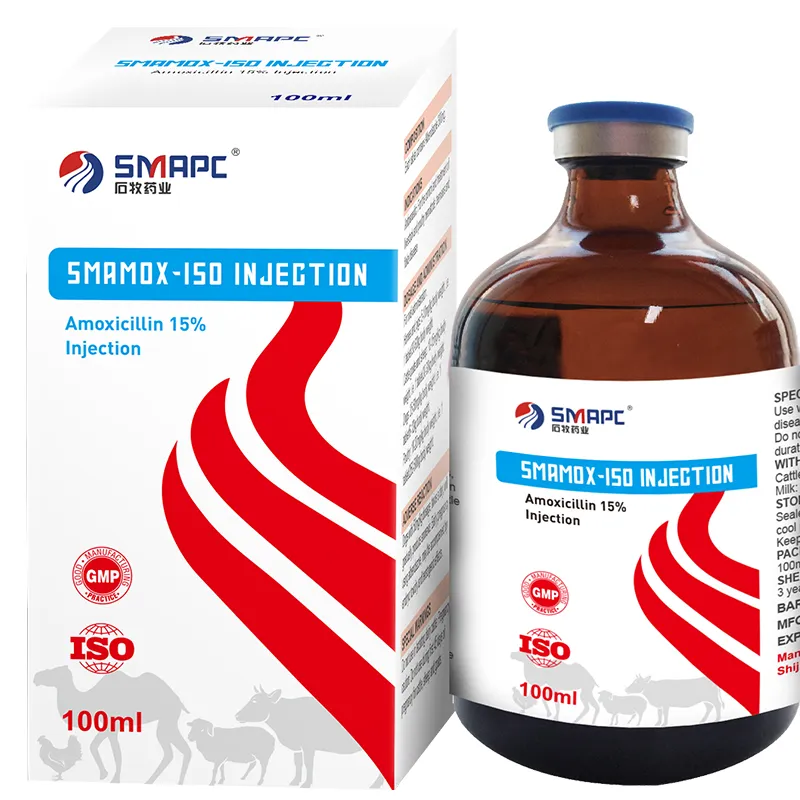Aug . 15, 2024 12:55 Back to list
Effective Antibiotic Treatment Strategies for Pneumonia in Calves to Improve Recovery Rates
Antibiotics for Calf Pneumonia An Overview
Calf pneumonia, also known as bovine respiratory disease (BRD), is one of the most common and economically significant diseases affecting young cattle. This condition not only leads to high morbidity and mortality rates but also results in substantial financial losses for farmers due to treatment costs, decreased weight gain, and lower quality of meat and milk production. Effective management of calf pneumonia often involves the use of antibiotics, which can be crucial in mitigating the disease's impact on herd health and farm profitability.
Understanding Calf Pneumonia
Calf pneumonia is primarily caused by a combination of infectious agents and stress factors. Common pathogens include bacteria such as Mannheimia haemolytica, Pasteurella multocida, and Mycoplasma bovis, alongside viral agents like Bovine Respiratory Syncytial Virus (BRSV) and Infectious Bovine Rhinotracheitis (IBR). Stressors such as weaning, transportation, and environmental changes can weaken a calf’s immune system, making it more susceptible to these infectious agents.
The Role of Antibiotics
Antibiotics play a vital role in the treatment of calf pneumonia, primarily when bacterial infections are involved. Their primary function is to inhibit the growth of bacteria, thus aiding the immunological response to the infection. The selection of the appropriate antibiotic is essential, as different pathogens respond to different treatments.
Commonly used antibiotics for treating calf pneumonia include
1. Oxytetracycline This broad-spectrum antibiotic is effective against several bacteria associated with BRD. It is often administered intramuscularly and can provide a rapid response.
antibiotic for calf pneumonia

2. Procaine Penicillin Known for its effectiveness against certain bacterial infections, procaine penicillin is also employed in the treatment of calf pneumonia, particularly in cases where secondary bacterial infections develop following viral infections.
3. Florfenicol This antibiotic has gained acceptance in treating respiratory diseases in cattle due to its effectiveness against Mannheimia haemolytica. It is often used in cases that do not respond well to other treatments.
4. Tilmicosin Specifically formulated for respiratory conditions, tilmicosin is administered subcutaneously and provides a long-acting effect, making it suitable for controlling pneumonia outbreaks in herds.
Considerations for Antibiotic Use
While antibiotics can be incredibly effective, their use must be approached with caution. The emergence of antibiotic resistance is a significant concern, and inappropriate use can lead to resistant strains of bacteria, complicating treatment options in the future. Thus, a strategic approach that includes accurate diagnosis, appropriate antibiotic selection, and adherence to withdrawal times before slaughter or milk production is essential.
In addition to antibiotic therapy, supportive care measures such as providing good nutrition, reducing stress through improved husbandry practices, and maintaining a clean and comfortable environment are vital in managing calf pneumonia. Vaccination programs targeting specific viral pathogens can also help reduce the incidence of pneumonia, leading to better overall herd health.
Conclusion
In summary, the effective management of calf pneumonia requires a multifaceted approach where antibiotics play a pivotal role. By understanding the disease's underlying causes, selecting the appropriate antimicrobial agents, and implementing comprehensive management practices, farmers can reduce the prevalence of this debilitating disease. Ultimately, investing in the health of calves not only promotes animal welfare but also secures long-term profitability for cattle operations.
-
Vital Solutions for Healthy and Productive SwineNewsJul.08,2025
-
Veterinary Powder Is VitalNewsJul.08,2025
-
Understanding Prescription Drugs for AnimalsNewsJul.08,2025
-
Understanding Poultry MedicineNewsJul.08,2025
-
The First Line of Defense in Animal HealthNewsJul.08,2025
-
Role of Veterinary Drug in Modern Animal HealthcareNewsJul.08,2025
Products categories







